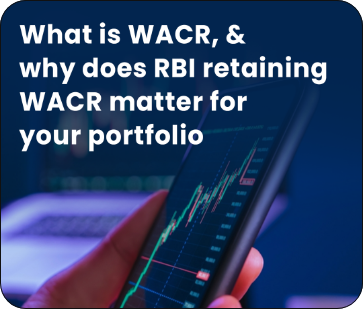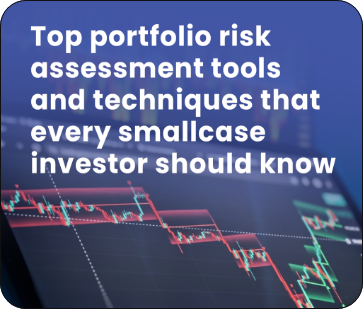
Is India’s power infrastructure
ready for the EV revolution?
Electric vehicles (EVs) aren’t just driving onto Indian roads but charging headfirst into our future.
EV adoption in India accelerated nearly 150% in FY24, led by two- and three-wheelers, and passenger EV sales are no longer a distant prospect.1
But this revolution hinges on far more than sleek car shells. It depends on a robust, responsive power system.
Can India’s grid evolve fast enough to support surging EV demand, or are we at risk of building on cracks?
Every Smallcase reflects a strategy, and every strategy comes with risk. In fact, with so many thematic narratives competing for your attention, it can be Momentum, Green Energy, EV, or India 2047! The real skill lies in separating insight from marketing.
In this article, we break down what’s happening and what smart investors should watch.
Table Of Contents:
- EV adoption is accelerating- but can the grid keep pace?
- Charging stations: The backbone of EV infrastructure
- Is India’s power grid ready for the EV load?
- How are government policy and industry players powering the EV shift?
- How can EV growth boost the economy and cut emissions?
- Potential risks and roadblocks to expect
- How should investors act in this EV boom?
- Conclusion
EV adoption is accelerating - but can the grid keep pace?
India recorded around 250 GW of peak electricity demand in May 2024, which is a sharp 50% rise from 2021.
But power generation alone isn't the full story. Peak demand, when solar dips and coal kicks in, strains local grids, especially with evening home-charging surges.
EV charging introduces new timing and volume of demand:
- Evening residential charging
- Daytime fleet charging
- Fast chargers on highways
Each will require tactical upgrades, not just megawatts, but smarter dispatch.
Charging stations: The backbone of EV infrastructure
Charging networks determine real-world EV usability. These are the stations drivers interact with, day in and day out.
Charger types:
- DC fast chargers (50-150 kW): Essential for inter-city routes and can fill in 30 to 60 minutes.
- AC chargers (7-22 kW): Best for homes and offices; slower, but steady.
By the end of 2024, India had around 25,200 public stations. Karnataka led with 5,765, followed by Maharashtra at 3,728, and Uttar Pradesh at 1,989. Delhi, Tamil Nadu, and Kerala made up most of the rest.
Current challenges:
- Fast chargers remain rare on highways
- Many are low-occupancy, undermining public confidence
- Grid connectivity issues, such as transformer upgrades, feeder grid access, and delayed deployment
Charger density may grow, but uptime and convenience will make or break adoption.
Is India's power grid ready for the EV load?
India has hit 50% non-fossil capacity, yet distribution networks remain fragile. Here's what needs careful engineering:
- Distribution Upgrades: Local transformer load, cable quality, control systems
- Smart Load Forecasting: Need to anticipate EV adoption spikes, using data-driven models like the ones in TERI's city-level readiness study
- Storage Integration: Grid-scale and behind-the-meter batteries reduce evening peaks and align renewables
- V2G Pilots: Kerala recently trialled bidirectional chargers - EVs discharging to the grid during spikes
According to government reports, big states like Delhi require ₹3,300 crore in transmission and ₹1,900 crore in distribution investments. Many projects, however, remain stuck in planning.
How are government policy and industry players powering the EV shift?
The Indian government's Faster Adoption and Manufacturing of Hybrid and Electric Vehicles (FAME-II) scheme is allocating over ₹20,000 crore toward EV adoption, charging infrastructure, and demand incentives.
Similarly, the Ministry of Power's National EV Charging Programme (NEVCP) aims to install 2,000 fast-charging stations in phases.
On state-level fronts, Tamil Nadu, Maharashtra, Delhi, and Gujarat have released EV-infrastructure policies offering subsidies, land acquisition deals, and electricity tariff waivers, all in a bid to kickstart private participation.
Key Industry Players:
- Energy Companies: NTPC Vidyut Vyapar Nigam (NVVN) and Tata Power are aggressively entering the fast-charging network.
- Automakers: OEMs such as Tata, MG, and Hyundai are tying up with sites like highways, malls, and municipal bodies to build networked charging corridors.
- Technology Providers: Batteries, inverter manufacturers, and software-based energy management firms quietly capitalise via B2B and micro-grid components.
This coordinated ecosystem, backed by capital, corporate, and state-level synergy, supports EV adoption.
It's also a key amplifier for stock portfolios that track infrastructure and renewable growth.
How can EV growth boost the economy and cut emissions?
Beyond cleaner transport, EVs represent a structural shift with long-term economic, industrial, and environmental benefits.
GDP boost through new value chains
Every million EVs is estimated to add ₹10,000 crore to India's GDP over a decade. This comes from value created across the EV lifecycle, battery plants, software, charging infra, and services.
Reduced oil imports strengthen the economy. India imports over 85% of its crude oil. EVs directly reduce fossil fuel dependency, saving billions in forex and improving our energy trade balance.
Higher energy efficiency unlocks cost savings
EVs convert 85-90% of electrical energy into motion, compared to just around 30% for ICE vehicles. This efficiency translates into lower per-km energy costs for consumers and fleets.
Cleaner air means healthier cities
Tailpipe-free vehicles reduce urban air pollution, especially PM2.5 and NOx levels. This leads to fewer respiratory illnesses, lower public health spending, and better quality of life in metros.
New jobs across sectors and skill levels
EV growth will generate employment across manufacturing, battery tech, maintenance, software, and grid modernisation.
States like Karnataka and Tamil Nadu are already seeing clusters emerge around EV and clean-tech hubs.
Choosing the best smallcase company can make a meaningful difference in how you participate in this transition.
Whether you're targeting renewable energy, EV infrastructure, or smart grid themes, aligning with the right experts ensures your Smallcase investment is grounded in solid research, not speculation.
Potential risks and roadblocks to expect
India's EV push is strong, but a few critical hurdles could slow progress if not addressed proactively:
- Grid overload at the local level: Fast chargers can strain aging transformers and feeders, especially in older urban areas. Local blackouts or equipment failures could increase without targeted upgrades and smart load management.
- Low charger uptime hurts user confidence: Even in major cities, many public chargers report poor uptime or app malfunctions. When EV drivers can't find a reliable charger, adoption hesitates, especially beyond early adopters.
- Battery import dependency is a strategic risk: India imports most of its lithium-ion cells, exposing the EV sector to price shocks and geopolitical supply risks. While domestic battery manufacturing is coming up, it will take years to scale.
- Policy shifts could disrupt momentum: FAME-II subsidies have powered much of the current growth, but the scheme expires soon. Any delay or gap in replacing it (like with PM E-DRIVE) could disrupt industry momentum.
- Uneven state readiness slows national impact: While states like Delhi, Karnataka, and Maharashtra are surging ahead, others lag due to unclear policies or a lack of infra funding. This disparity could fragment India's EV rollout.
- Cybersecurity gaps in charging networks: As EV chargers become smarter and grid-connected, they also become more vulnerable to cyber threats. A lack of clear national standards could leave systems exposed.
How should investors act in this EV boom?
Charting this space requires discipline. Here's your practical guide:
- Target structural themes, not just trendy tickers: Look for businesses tied to long-term EV enablers like renewable-rich utilities, power automation, grid tech, battery storage, and fast-charging infrastructure. These are the real foundations of India's electrification story.
- Look for both earnings and momentum: Identify companies that show consistent topline growth, rising profitability, and strong technical breakouts. Market validation often follows solid execution.
- Choose the best Smallcase company: Even a strong theme needs expert and research-backed curation. An experienced manager brings research depth, market timing, and portfolio discipline to your Smallcase investment.
- Build exposure through thematic Smallcase portfolios: Like PINC Momentum Fundamental Smallcase, which focuses on stocks where visibility in earnings continues for the next 4 to 6 quarters.
- Don't skip due diligence: Go beyond narratives by studying business models, capital allocation, debt levels, and government alignment. Even with Smallcases, understanding what you own is key to long-term conviction.
- Balance your allocation: Pair large-cap infrastructure plays with high-growth mid-cap enablers in the EV and clean-tech stack. This gives you stability with upside, across phases of the EV curve.
Conclusion
EVs will transform transport, but they will only matter if the grid is ready. As India builds fast chargers, storage, and smarter utilities, the opportunities in clean infrastructure are becoming more real.
From power grids to charging stations, policy to execution, the infrastructure must evolve in sync.
For investors, this shift presents a rare opportunity to align portfolios with a structural megatrend that's both economically and environmentally transformative.
We, at PINC Wealth, a leading wealth advisory brand, offer research-backed, expert-curated smallcase portfolios that help you invest in future-ready themes like clean energy, infrastructure, and mobility.
Related Articles

How will the US Fed rate cut impact inflation, Indian markets and your investment portfolio?
US Fed rate cuts influence Indian markets, currency trends, and smallcase stocks. Explore sectors that benefit, risks, and smart investment strategies for 2025.
Know more
What is WACR, and why does RBI retaining WACR matter for your portfolio?
Understand WACR and RBI's revised liquidity framework. Learn how these monetary policy changes impact your smallcase investment and portfolio returns.
Know more
‘Bite-sized’ smallcase investments: Low entry-cost portfolios for new and young investors
Making investment even easier and simpler with ‘bite-sized’ smallcase portfolios. Here’s a guide for beginners on how to start and build long-term wealth.
Know more
Top portfolio risk assessment tools and techniques that every smallcase investor should know
Learn about the top portfolio risk assessment tools and techniques that every smallcase investor should know to analyse and manage the potential risk, and how financial advisors help in this effectively.
Know moreMeet the people
we served!
PINC Compounder Smallcase has simplified my investment journey. Seriously, investing has never been easy for me! Here in a single click, I could access a balanced portfolio. Thanks PINC.
Mr. Akhilesh
I was hesitant about investing, but PINC Smallcase changed that. Talking to their team and looking at their growth gave me confidence. I've seen my investments grow steadily since then. I'm impressed!
Devendra Palan
As someone with limited knowledge about the stock market, I found Pinc smallcase to be a reliable and accessible platform. Their detailed reports and analysis have given me a deeper understanding of the stocks in my portfolio. I feel confident in managing my investments.
Pratik Gandhi

Subscribe to our email list
Sign up for Expert Insights
Your Gateway to Smarter Wealth
Management!